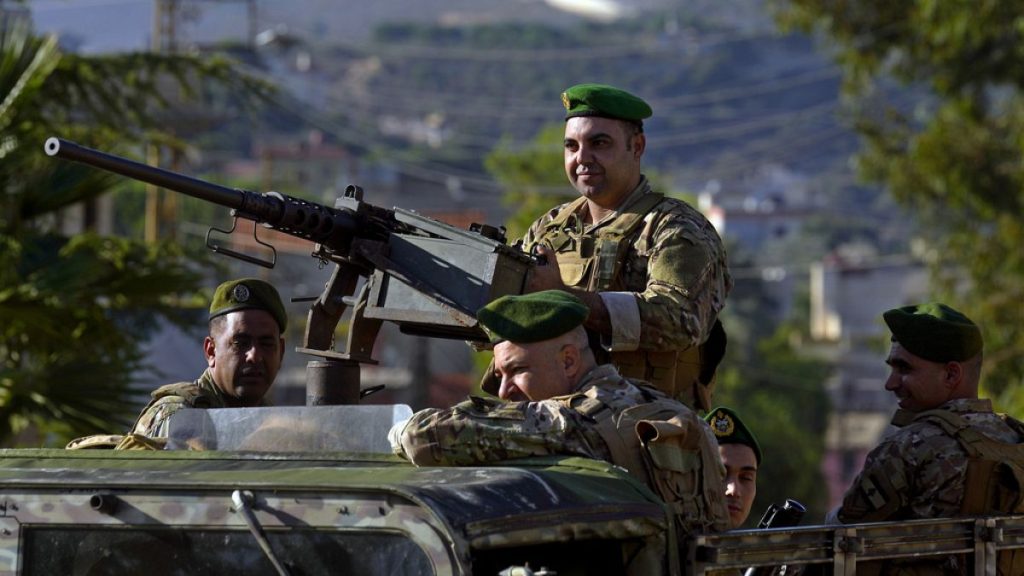The ceasefire agreement reached in November between Israel and Hezbollah, mediated by US envoy Amos Hochstein, is steadily progressing towards its goal of demilitarizing Southern Lebanon. The agreement stipulates a phased withdrawal of both Israeli forces and Hezbollah fighters from the contested region, with the Lebanese Armed Forces (LAF) and the United Nations Interim Force in Lebanon (UNIFIL) assuming responsibility for security. This complex process represents a significant step towards de-escalation and stability in a region long plagued by conflict.
The phased withdrawal is currently underway, marked by the LAF’s deployment to key areas previously occupied by Israeli forces. Following Israel’s retreat from the southern coastal city of Naqoura, the LAF, supported by UNIFIL, entered the area to begin securing it. Visual evidence of this deployment was captured and released by the Lebanese army, showcasing military vehicles moving through Naqoura. The LAF’s entry into Naqoura mirrors similar deployments in other southern towns like Khiam and Shamaa, confirming the progressive nature of the Israeli withdrawal. The army’s specialized units are tasked with crucial post-conflict activities such as clearing unexploded ordnance, a critical step in restoring safety and normalcy to the area. Public safety measures, including advising residents to avoid the affected areas and adhere to instructions, underscore the ongoing security concerns despite the ceasefire.
Hochstein, serving as a key mediator and representing the US’ involvement in the peace process, expressed confidence in the ongoing withdrawal and commended the LAF’s performance. While he refrained from explicitly confirming the full completion of the withdrawal within the 60-day timeframe stipulated by the agreement, his optimistic assessment suggests a positive trajectory towards achieving that goal. The continuing collaboration between all parties involved, including the US, Lebanon, and Israel, remains pivotal for the enduring success of this delicate process. The remaining weeks leading up to the 60-day mark will be crucial for ensuring a complete and peaceful transition of control in Southern Lebanon.
While the focus rests heavily on the implementation of the Southern Lebanon ceasefire, a separate and devastating incident unfolded in the Gaza Strip. An Israeli airstrike targeted the Bureij refugee camp, resulting in the tragic deaths of at least three Palestinians, including two women. This incident underscores the fragility of the situation in the region and the ongoing humanitarian crisis impacting Palestinian civilians. The context of this airstrike remains unclear, and whether it is directly related to the broader conflict or a separate incident needs further investigation. Nonetheless, the casualties add another tragic dimension to the already complex geopolitical landscape.
The broader context of the Gaza situation stems from the devastating war between Israel and Hamas, triggered by Hamas’s October 7th incursion across the border. This conflict has inflicted immense suffering, with Palestinian casualties exceeding 45,800, a majority being women and children. The sheer scale of this human tragedy highlights the urgent need for sustainable peace and protection of civilian lives. The attack on Israel resulted in approximately 1,200 deaths, primarily civilians, and the abduction of about 250 people. The fate of the remaining hostages held in Gaza, at least a third of whom are presumed dead, adds another layer of urgency to resolving the underlying conflicts.
The concurrent events in Southern Lebanon and Gaza underscore the multifaceted nature of the Israeli-Palestinian conflict and the broader regional instability. While the progress in Southern Lebanon offers a glimmer of hope for de-escalation, the tragic events in Gaza serve as a stark reminder of the persistent challenges. The international community’s sustained commitment to finding lasting solutions is crucial for addressing the root causes of conflict and preventing further suffering. The successful implementation of the ceasefire agreement in Southern Lebanon could serve as a model for future de-escalation efforts, while the situation in Gaza demands urgent humanitarian action and a renewed commitment to finding a sustainable path to peace. The path forward requires a multifaceted approach that addresses both immediate security concerns and the underlying political and humanitarian issues that fuel the ongoing cycle of violence.














